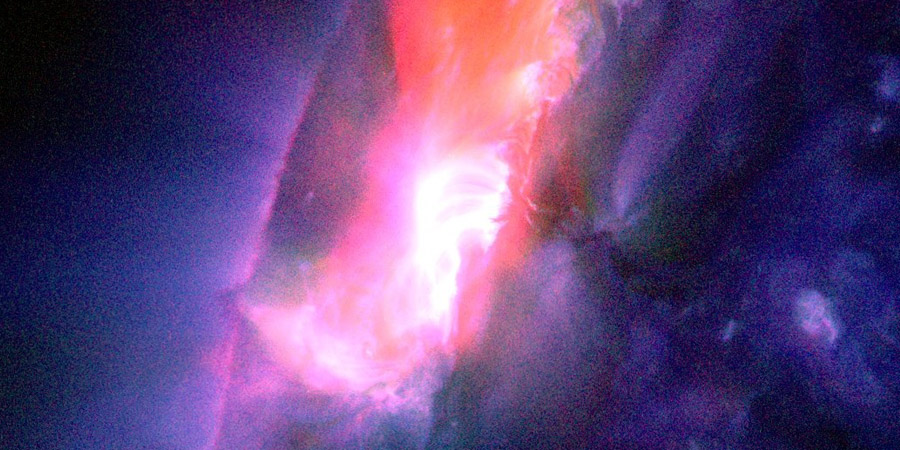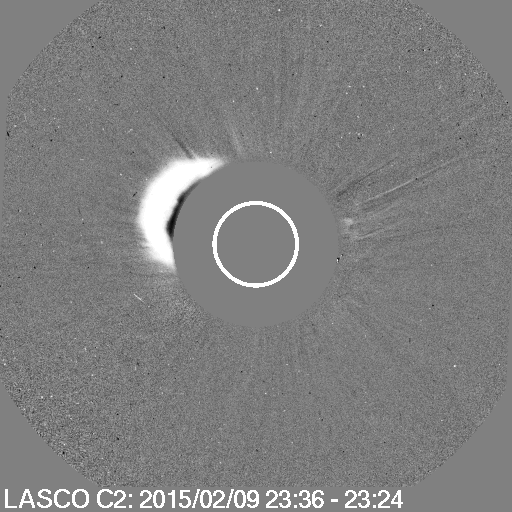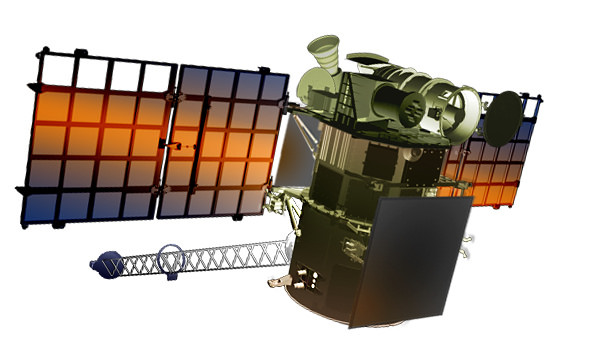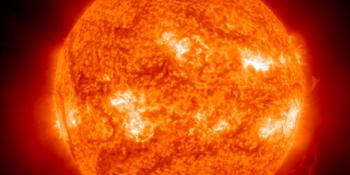M2.4 solar flare, DSCOVR launch countdown
Tuesday, 10 February 2015 08:12 UTC

Solar activity increased to moderate levels thanks to sunspot region 2282. It produced an M2.4 solar flare that peaked yesterday at 23:35 UTC. The solar flare was long in duration and highly eruptive. A coronal mass ejection was launched but SOHO/LASCO imagery is still incomplete so it is unsure if there is an earth-directed component. An earth-directed component is however unlikely when we consider that the flare occured close to the east-limb.
ALERT: Type II Radio Emission Begin Time: 2015 Feb 09 2323 UTC Estimated Velocity: 1190 km/s
ALERT: Type IV Radio Emission Begin Time: 2015 Feb 09 2335 UTC
Video: The M2.4 solar flare as captured by NASA SDO.
The image below shows the latest available frame from the SOHO/LASCO coronagraph. The beginning of a bright coronal mass ejection can be seen but there is no way to tell if there is an earth-directed component. As mentioned before, an earth-directed component is unlikely but should other evidence contradict this conclusion then we will be sure to let you know.

Image: latest frame from SOHO/LASCO C2 showing the beginning of a large coronal mass ejection.
DSCOVR launch countdown
It is launch day...! Hopefully! The Deep Space Climate Observatory (DSCOVR) mission is now scheduled to launch today at 23:05 UTC from Cape Canaveral, Florida on a SpaceX Falcon 9 rocket. NOAA reports that there is a 70 percent chance of favorable weather conditions today but should anything go wrong prior to the launch, there is a backup launch opportunity tomorrow at 23:03 UTC. The launch can be followed live on NASA TV. Their coverage will begin at 22:00 UTC.
Are you wondering why the DSCOVR mission will be so important for space weather enthusiasts or do you just want to know more about the DSCOVR mission? Read our news article from Saturday!

Image: Artist's rendition of NOAA's DSCOVR: Deep Space Climate Observatory. Credit: NOAA/NASA.
Thank you for reading this article! Did you have any trouble with the technical terms used in this article? Our help section is the place to be where you can find in-depth articles, a FAQ and a list with common abbreviations. Still puzzled? Just post on our forum where we will help you the best we can!
Latest news
Latest forum messages
Support SpaceWeatherLive.com!
A lot of people come to SpaceWeatherLive to follow the Sun's activity or if there is aurora to be seen, but with more traffic comes higher server costs. Consider a donation if you enjoy SpaceWeatherLive so we can keep the website online!

Space weather facts
| Last X-flare | 2025/01/04 | X1.85 |
| Last M-flare | 2025/01/09 | M1.1 |
| Last geomagnetic storm | 2025/01/04 | Kp5 (G1) |
| Spotless days | |
|---|---|
| Last spotless day | 2022/06/08 |
| Monthly mean Sunspot Number | |
|---|---|
| December 2024 | 154.5 +2 |
| January 2025 | 140.8 -13.8 |
| Last 30 days | 151.7 +34.3 |


